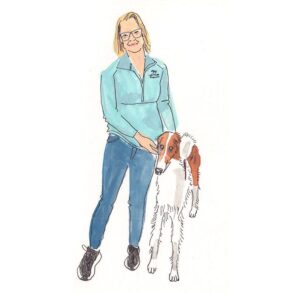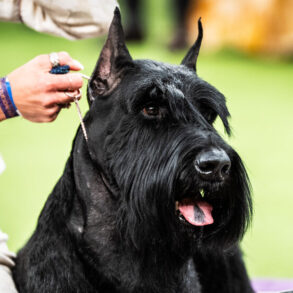Two dogs specially trained to sniff out truffles have helped researchers identify two new-to-science truffle species in the U.S., according to a recent study.
Truffles, synonymous with luxury fine dining, are the fruiting bodies of fungi belonging to the genus Tuber, which grow underground in a symbiotic relationship with the roots of trees like oak, pine, beech and hazelnut. These fungi can be found both in the wild and in truffle orchards, where truffles are cultivated with careful inoculation of trees.
However, since Tuber fungi spend their entire lives underground, they’re easy to miss, said Gregory Bonito, an associate professor in the Department of Plant, Soil and Microbial Sciences at Michigan State University, U.S., and co-author of the study.
So to understand the native diversity of North American Tuber species, Bonito and his colleagues have been getting help from dogs specially trained to detect the aroma of ripe truffles. The dogs sniff out truffles, and their trainers sometimes send the samples to the researchers.
Careful morphological and genetic analysis of the samples turned up two new-to-science species.
Tuber cumberlandense: This species was named after the Cumberland Plateau in the eastern U.S., where Margaret Townsend and her truffle dog, Luca, collected most of the samples of this truffle. The fungus appears to grow both in truffle orchards and in woodlands. It can look like other known varieties of North American truffles and has also been mistakenly sold as them in the past, Bonito told Mongabay. However, closer inspection reveals several differences in its structure, including a wrinkly outer lining and “spiney” spores. It also has an especially pungent and distinct aroma.
Tuber canirevelatum: Meaning the “dog-found” truffle, this species was named in honor of truffle dogs for their contribution to the discovery and harvesting of truffles. Samples of T. canirevelatum were collected by the dog Monza and her trainer, Lois Martin, from a municipal park in Tennessee. It’s among the darker-colored Tuber species in North America, Bonito said. It’s also one of the few species to have larger warts on its outer lining, and large, honeycombed spores. It has a pleasant aroma.
Most prized commercial truffles today come from Europe, including the black truffle (Tuber melanosporum), summer truffle (T. aestivum) and the bianchetto or white truffle (T. borchii).
Several commercially viable species grow in North America as well, including the Oregon white truffle (Tuber oregonense). However, North America’s native truffle diversity isn’t as well understood.
“We are finding new species all the time,” Bonito said.
Like many fungi, Tuber species haven’t been assessed for the IUCN Red List to determine their conservation status. However, Bonito said he suspects T. canirevelatum may be rare since it’s only been found once and belongs to an “underrepresented” group of Tuber fungi.
The threat status of the newly described species remains unclear.
Banner image of Lois Martin and her dog, Monza, collecting truffles in a Tennessee truffle orchard, courtesy of Michigan State University.
This post was originally published on this site be sure to check out more of their content.








































